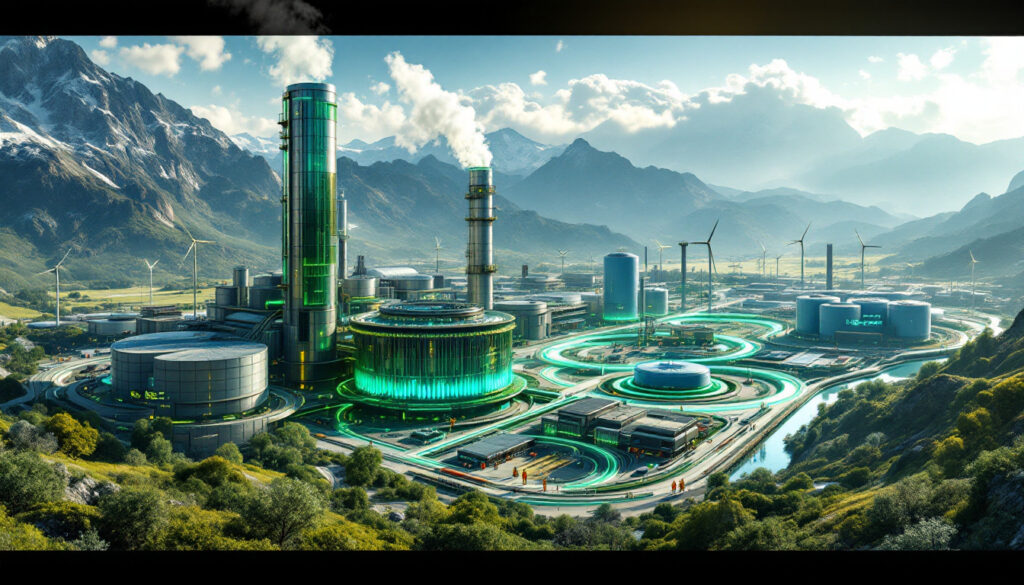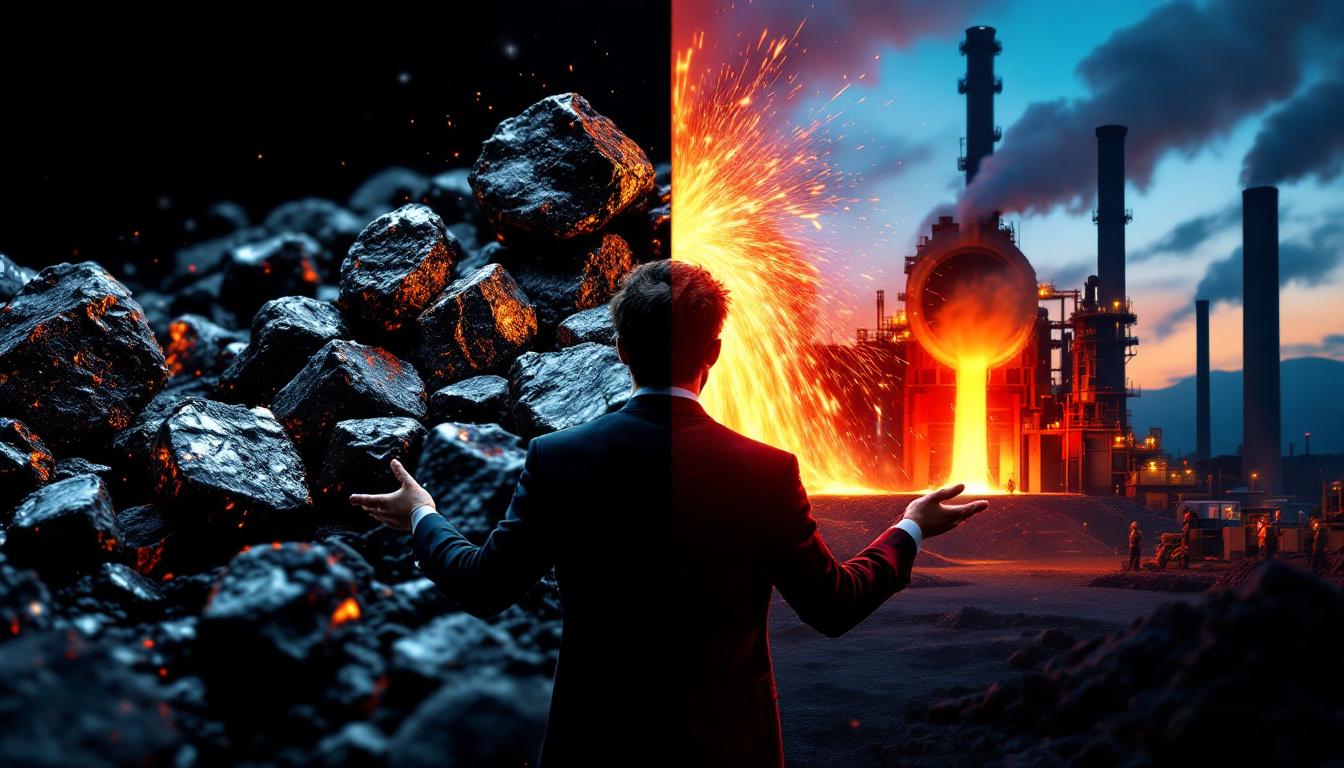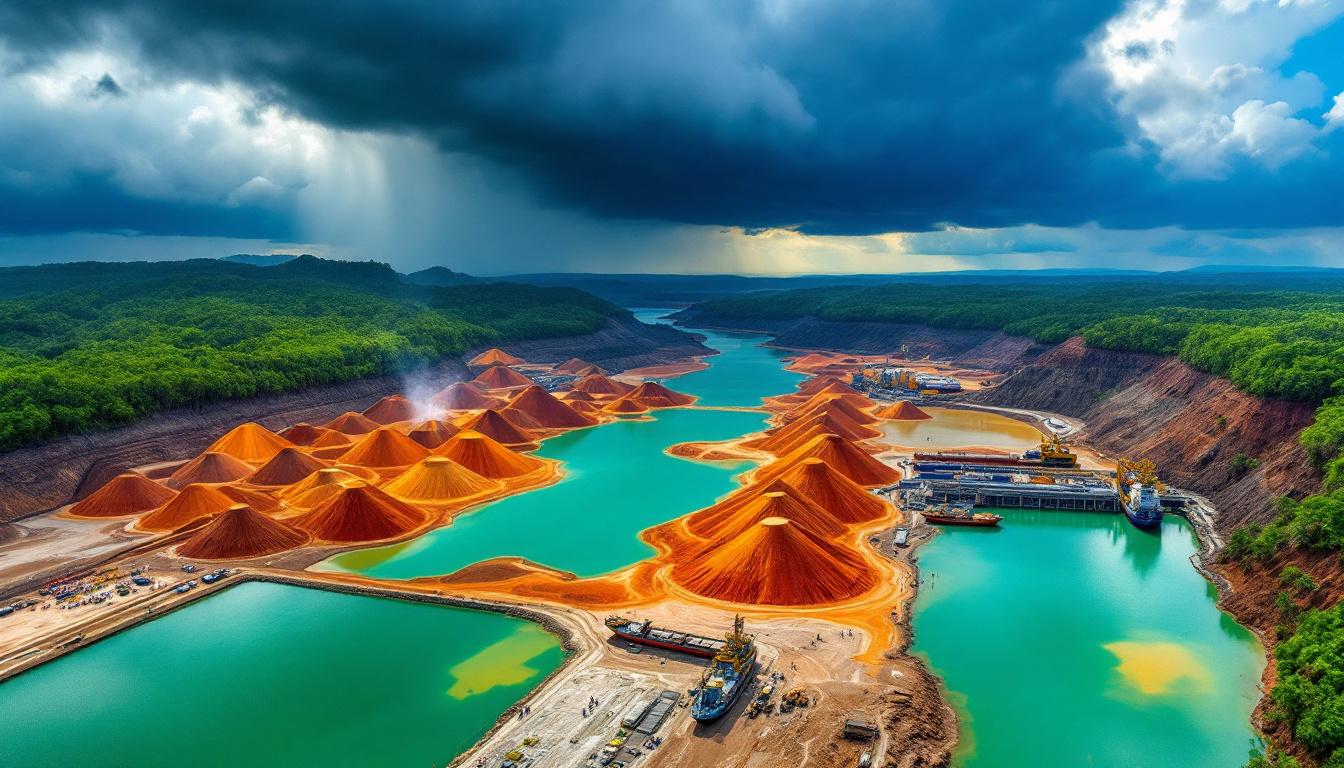What is the HBIS-Vale Steel Decarbonisation Partnership?
Chinese steelmaker HBIS and Vale sign MOU for steel decarbonisation marked a pivotal step in global efforts to address climate change. This announcement underlines the ambition of both companies to transition to low-carbon producing methods. In addition, the partnership has already drawn comparisons with pioneering steel partnership initiatives.
This alliance brings together HBIS Group, one of China’s largest steelmakers, and Vale, a key global mining entity. Consequently, they share a commitment to drive down emissions in one of the most carbon-intensive industries in the world. Furthermore, Chinese steelmaker HBIS and Vale sign MOU for steel decarbonisation has laid the groundwork for unprecedented international collaboration.
How Will the HBIS-Vale Collaboration Reduce Steel Industry Emissions?
The partners will focus on several advanced technical methods. For instance, they are set to optimise the burden composition in blast furnaces. This includes the perfect blend of iron ore, fluxes, and innovative fuels. Moreover, the plan features the evaluation of alternative processes, such as the use of hydrogen and biomass.
In addition, the feasibility studies will assess the applicability of Tecnored furnace technology. Originally developed by Vale, this method uses alternative reducing agents. Moreover, it supports waste treatment and metal recovery. Industry experts have noted that integrating decarbonisation industry gap insights will be crucial for success.
Consequently, another focus is on hydrogen metallurgy technologies. This method could slash overall emissions by up to 95% compared to traditional blast furnaces. Furthermore, carbon capture, utilisation, and storage (CCUS) ambitions aim to shrink emission levels even further. Chinese steelmaker HBIS and Vale sign MOU for steel decarbonisation is a critical example of combining novel methods with existing practice.
Why Is Steel Decarbonisation Important for Climate Goals?
Steel production is responsible for roughly 7-9% of global CO₂ emissions. Moreover, about 3.6 billion tonnes of carbon dioxide are emitted annually. In addition, traditional methods based on coal present significant environmental challenges. For example, a basic oxygen furnace can produce between 1.8 and 2 tonnes of CO₂ per tonne of steel.
Furthermore, increasing global steel demand amplifies the need for decarbonisation. The Paris Agreement requires a massive reduction in carbon intensity to meet temperature targets. Consequently, industry leaders must explore innovative, low-carbon production methods. Notably, Chinese steelmaker HBIS and Vale sign MOU for steel decarbonisation repeatedly demonstrates the urgency of this transformation.
What Are HBIS Group's Current Sustainability Initiatives?
HBIS Group is at the forefront of sustainability within China’s steel industry. The company adheres to the Worldsteel Updated Sustainability Charter and maintains high environmental performance standards. In addition, HBIS has implemented China’s first comprehensive Low Carbon Development Roadmap. This roadmap set ambitious targets long before many competitors.
HBIS is developing six major low-carbon technologies alongside two management platforms. For instance, a hydrogen-rich blast furnace system is already in pilot tests. In addition, over ¥8 billion has been invested in advanced CCUS technology at the Tangshan facility. These measures highlight a strong forward-looking commitment, reaffirming Chinese steelmaker HBIS and Vale sign MOU for steel decarbonisation as a trailblazer.
Moreover, the company is innovating with high-strength, lightweight steel products. These new grades are vital for reducing the automotive sector’s material weight. Consequently, vehicles can experience up to a 20% weight reduction while maintaining safety. Additionally, such innovations promote sustainability not only in production but also in end-use applications.
How Does This Partnership Fit Into Vale's Green Strategy?
The recent MOU with HBIS is a cornerstone of Vale’s extensive green strategy. Vale is transforming from a conventional mining company into a leader in sustainability. In addition, it is investing significantly in partners to drive low-carbon steel production. For instance, a green hydrogen facility in Brazil has already been announced.
Vale has set bold targets, including a 33% reduction in Scope 1 and 2 emissions by 2030 and reaching carbon neutrality by 2050. What's more, the company is investing between $4-6 billion in decarbonisation projects during the next decade. With technologies like esg and opportunities entering the fray, progress appears tangible.
Furthermore, Vale’s expertise in the Tecnored process uniquely positions it for success. This process facilitates the use of biomass and hydrogen. Consequently, emissions could potentially drop by half compared to conventional methods. Hence, the collaboration precisely reflects the goals outlined in Chinese steelmaker HBIS and Vale sign MOU for steel decarbonisation.
What Technologies Will Drive Steel Industry Decarbonisation?
Numerous transformative technologies are being tested to cut steel emissions. Crucially, hydrogen metallurgy is considered revolutionary. This technology replaces carbon-based reducing agents with hydrogen, thereby realising water as the end-product.
Additionally, carbon capture utilisation and storage systems are set to capture up to 90% of emissions. Furthermore, the innovative Tecnored furnace plays a significant role in facilitating a transition from natural gas to renewable fuels. Moreover, circular economy strategies via scrap-based electric arc furnaces are gaining attention. It is essential to underscore that Chinese steelmaker HBIS and Vale sign MOU for steel decarbonisation drives multiple technical innovations onward.
Industries are encouraged to adopt a hybrid strategy. – Firstly, hydrogen injection can complement CCUS systems.
– Secondly, integrating alternative fuels gradually can ease transition hurdles.
– Thirdly, reusing scrap steel supports long-term sustainability.
What Are the Global Implications for Steel Industry Transformation?
This landmark partnership spans continents and sectors, setting a new precedent in global decarbonisation efforts. Moreover, the impact of such collaborations is signalling a shift in worldwide steel markets. For instance, incorporating cutting-edge technology could give green steel a 10-30% premium over conventional alternatives.
In addition, the approach breaks down traditional boundaries by promoting international knowledge exchange. Similarly, geopolitical shifts—such as the EU’s CBAM and US Inflation Reduction Act—mean that these efforts have broader economic implications. Consequently, Chinese steelmaker HBIS and Vale sign MOU for steel decarbonisation reinforces the need to align production with global sustainability standards.
Furthermore, market analysts have noted that international cooperation can accelerate technology transfer. Likewise, standardising processes across countries may lead to more competitive pricing. In summary, this partnership is a harbinger for future industry-wide transformations.
What Industry Standards and Commitments Are Guiding This Partnership?
The HBIS-Vale collaboration is underpinned by robust industry standards. For example, adherence to the Worldsteel Sustainability Charter sets benchmarks in safety, efficiency, and environmental responsibility. In addition, the Science Based Targets initiative requires a 50% reduction in emissions intensity by 2030.
Another influential framework is the ResponsibleSteel standard, which provides comprehensive guidance on greenhouse gas limits and water stewardship. Moreover, emerging standards in carbon transparency are beginning to shape industry practices. Furthermore, initiatives like green aluminium initiative and copper production strategy bolster this drive.
Such frameworks are essential when establishing clear, measurable targets. In addition, they offer both transparency and accountability. Lastly, these standards reinforce the commitments made by Chinese steelmaker HBIS and Vale sign MOU for steel decarbonisation.
FAQs About Steel Decarbonisation
What is the current carbon footprint of steel production?
The global average stands at approximately 1.85 tonnes of CO₂ per tonne of steel. However, processes like blast furnaces can emit up to 2.3 tonnes per tonne, whereas scrap-based electric arc furnaces typically release only 0.3-0.6 tonnes.
How does hydrogen metallurgy reduce steel emissions?
By replacing coal with hydrogen, this method produces water vapour rather than CO₂. In addition, it offers a radical reduction in direct emissions while relying significantly on renewable energy sources.
What are the cost implications of steel decarbonisation?
Adopting low-carbon technologies might raise production costs by 15-45%. However, as technology matures, analysts predict a decline in these premiums to 10-25% by 2035, which further supports sustainable investment.
Why are partnerships between mining companies and steelmakers important?
They enable a coordinated, effective transition to low-carbon processes. In addition, such collaborations ensure that raw materials and production techniques evolve simultaneously. This synergy is crucial for the successful implementation of strategies like Chinese steelmaker HBIS and Vale sign MOU for steel decarbonisation.
When will zero-carbon steel be commercially available at scale?
Early market volumes are emerging in Europe and North America. Furthermore, significant scaling is expected by 2030-2035, with mainstream production potentially reaching optimum efficiency by the 2040s.
What Are the Next Steps for the HBIS-Vale Partnership?
The partnership is set to progress through a phased approach. Initially, joint research and feasibility studies will start in 2024. Moreover, key application areas—such as optimising iron ore burden for reduced carbon intensity—have been identified.
By mid-2024, a joint technical working group will be established to pilot test Vale’s green briquettes. This approach is expected to reduce process emissions by 10-15%. Additionally, plans are underway to construct a demonstration Tecnored facility in China during 2025-2026. The facility will begin with natural gas, eventually transitioning to biomass and hydrogen.
A less publicised yet critical aspect involves knowledge exchange on carbon accounting methodologies. Furthermore, these efforts will underpin product certification for “green steel” markets. In addition, they will help verify emissions reductions using emerging international standards.
Moreover, pioneering initiatives like the reuters steel update provide further insights into these developments. Similarly, mining tech collaboration news reflects ongoing industry efforts supporting this transition.
Ultimately, industry observers agree that the success of this collaboration will spur additional partnerships. In essence, Chinese steelmaker HBIS and Vale sign MOU for steel decarbonisation stands as a model for future global transformation in sustainable steel production.
Curious about the next major discovery in steelmaking innovation?
Stay ahead of transformative industry breakthroughs with Discovery Alert's proprietary Discovery IQ model, which delivers real-time notifications on significant ASX mineral and technology developments that could revolutionise steel production. Visit our discoveries page to understand how identifying major innovations early can lead to exceptional investment returns.




